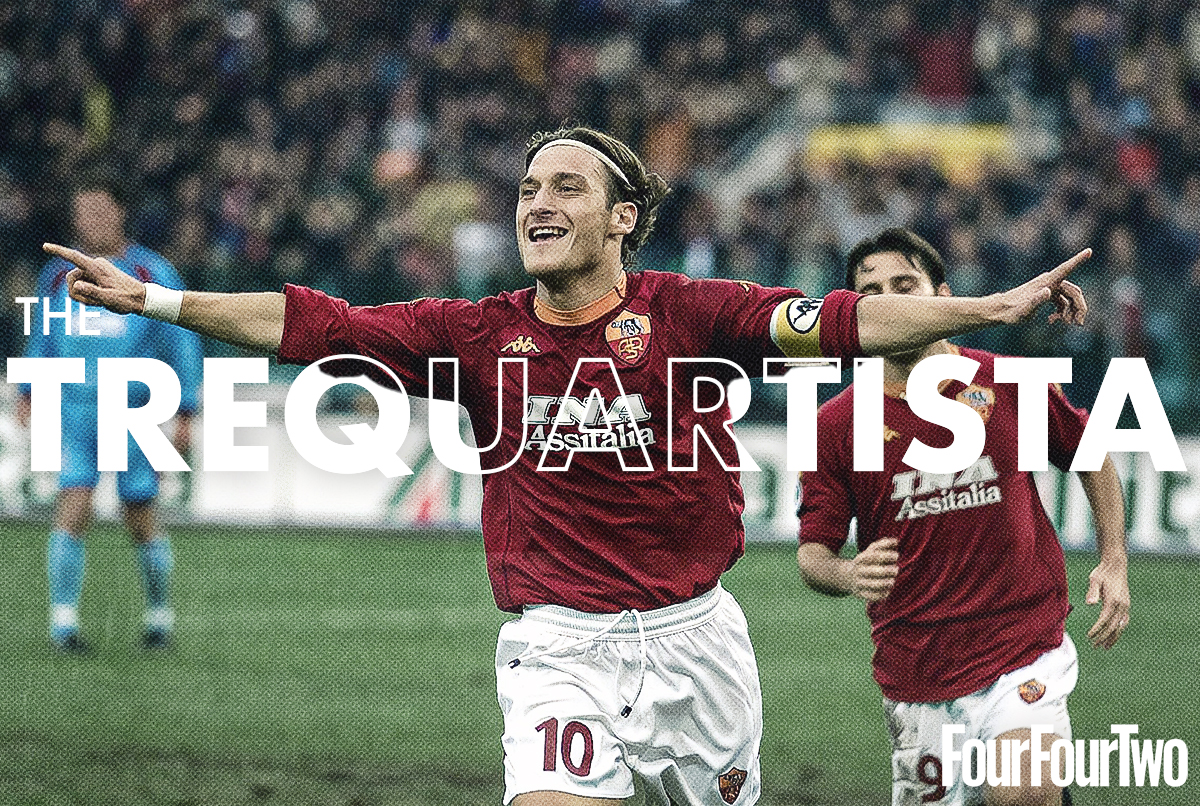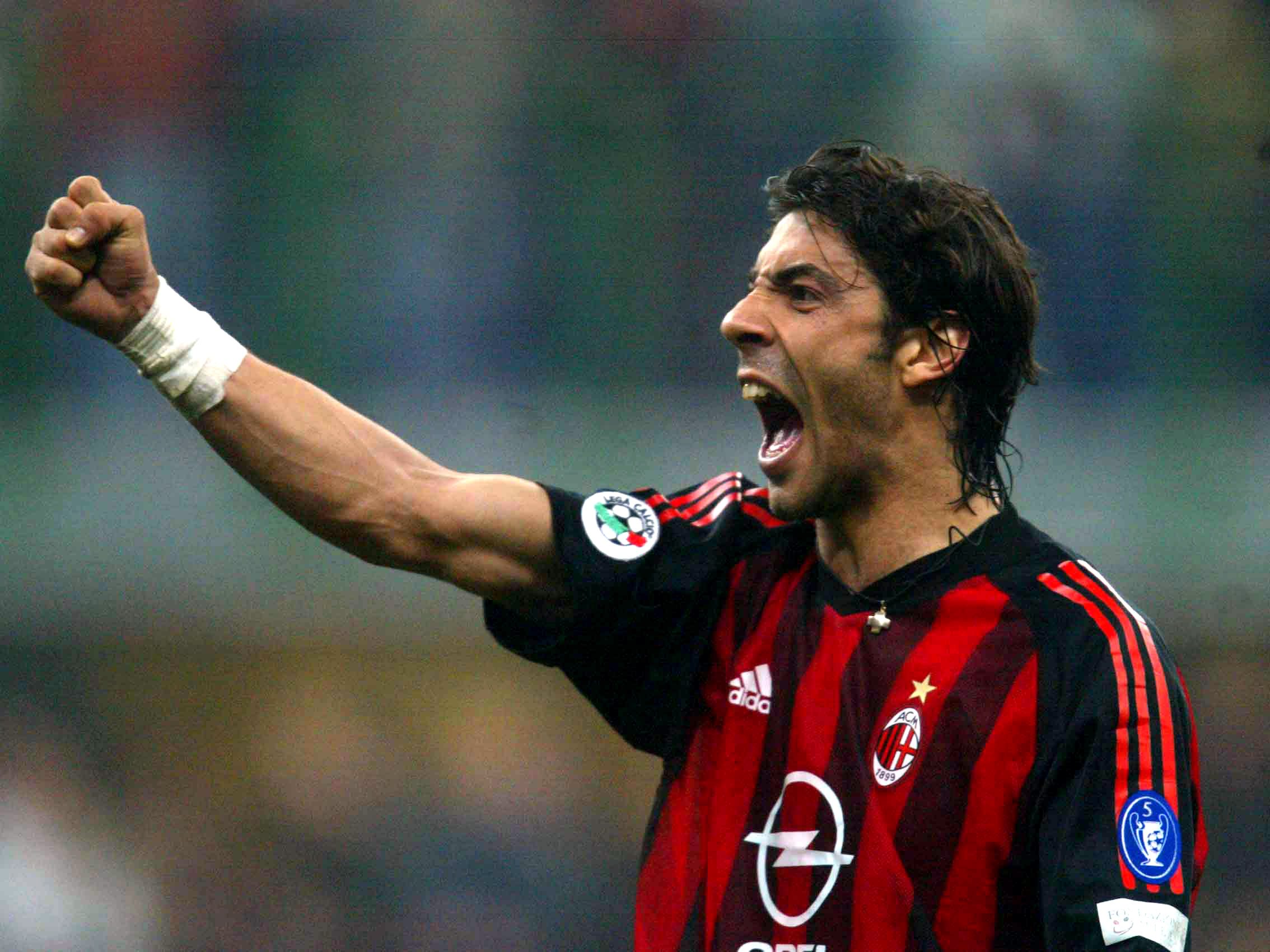
Ah, the trequartista. Just the very mention of the word evokes images of terracotta rooftops and the smell of freshly baked ciabatta.
So, as you can probably guess, a position on the football field born from a literal Italian translation encompasses all that style, glamour and luxury. But what exact role do they take up on the pitch and how do they influence football matches?
Let’s take a look: the experts here at FourFourTwo are here to break down another football term into its most basic state, as we give you a tactical explainer on the trequartista.
What is the trequartista?
In Italian, trequartista means ‘three-quarters’ – and that gives a clue in terms of where they will generally pop up on the pitch.
Imagine splitting a pitch into four sections. A trequartista aims to pick up the ball in the third quarter, roaming around to find pockets of space, creating overloads and confusion in those pressing them.
The clip above highlights the no.10 – where a trequartista plays – in a 4-2-3-1.
This is what distinguishes a trequartista from other no.10s: the freedom to roam. The Argentine role of the enganche is similar but is more of a fixed focal point, while a shadow striker is a less creative player who slots behind a no.9 and looks to make late runs into the box.
The trequartista is defined by its work off the ball, too. They are something of a luxury player and defensive responsibilities are minimal: despite playing closer to a centre-forward than an ordinary no.10 usually would, they don't have the responsibility of pressing high.
Close control, creativity, movement, a high intelligence to read play and excellent link-up play are all staples of the definitive trequartista – who has something of a deal with his coach. Freeing up the player to show their attacking potential, even if it means the team may lose something defensively, is a difficult balance to strike – but one that was customary in Catenaccio-gripped calcio in Italy.
Who are the great trequartistas?

So many of the great creators in football history played this position. It almost feels unfair to only name a handful.
In the modern era, 2007 Ballon d'Or winner Kaka is maybe the last example of a trequartista who was, even if only briefly, the best player in the world. The Brazilian not only had the pre-required exceptional vision and passing ability but combined it with powerful runs forward that immediately put defenders on the back foot.
The best systems that allow a trequartista to thrive are those with defensive solidity behind the expressionist leading the team in the final third. While it's more than possible to deploy one of these players in a 4-2-3-1, classic Italian sides who have brought the best out of a trequartista have tended to line up with back threes, or with the trequartista at the tip of a diamond. Though not strictly a trequartista, Eden Hazard had similarities with the role during his renaissance at Chelsea under Antonio Conte in 2016/17, with the Italian using the playmaker as a no.10 in a 3-4-2-1 formation. Though Conte coached an intense off-the-ball system, Hazard was almost a passenger out of possession at times to allow him to pick up pockets of space and create. The result was one of the best individual seasons of his career as a mercurial talisman in the Blues' last title-winning team.
In general, Milan have always been known for producing greats in the position with Ruud Gullit one of the best to have ever graced football. Gullit had the engine and intelligence to pick the ball up in dangerous areas, while a successor in the role, Rui Costa’s vision in the final third during his peak years as a playmaker was magical.
Perhaps one of the most famous to have played the position, also provides one an interesting trequartista case study. For much of his glittering career at Roma, Francesco Totti lit up the eternal city from the position.
Totti was so influential that Fabio Capello – who pretty much played 4-4-2 for the entire rest of his career – switched to 3-4-1-2 system when he arrived in Rome. With Totti in the hole, behind two mobile strikers he was devastating. And years before Spain were using a false nine at major tournaments, Totti was combining that same role with that of a trequartista in a highly exciting and tactically intriguing Roma side of 2006/07.
The 4-6-0 formation may still have something of a bad reputation in the UK – mainly thanks to Craig Levein’s strikerless Scotland and an infamous 1-0 loss to Czech Republic in 2010 – but Luciano Spalletti employed a variation of that same formation for that Roma team. It was unusual yet brought the best out of Totti.
The Roma talisman was still utilised in his favoured trequartista position. But the team played with no real strikers, Totti the furthest man forward. He would still score goals but also be focused on linking play from deep, playing clever passes behind the opposition defence for Rodrigo Taddei, Simone Perotta and Mancini to run onto.
It was a hugely successful season, Roma finishing 2nd in Serie A and winning Coppa Italia.
What are the pros and cons of a trequartista?
Similarly to the regista – another Italian position with little defensive responsibility – the trequartista can be the heartbeat of a team, giving your side incredible fluidity and creativity.
Like the regista, however, the trequartista is such a specific role, with modern football moving more towards generalists than specialists. Just a no.6 or an inverted full-back is expected to fulfil a regista's remit these days, no.8s are favoured over no.10s by many managers who want compactness and numerical superiority over free-thinking expressionists. A shame? Yes, perhaps – but this is a team game and managers can't always rely on the brilliance of individuals.
In truth, there are few greats currently playing who can be defined solely as trequartistas. The majority of coaches working towards the top of the game can’t, or even don’t want to, find room for such a luxury player.
But there are plenty of great no.10s who incorporate skills and positions used by the great Trequartistas into their own game. All tactical trends fall in and out of fashion in football, and no doubt one day the trequartista will rise again.







